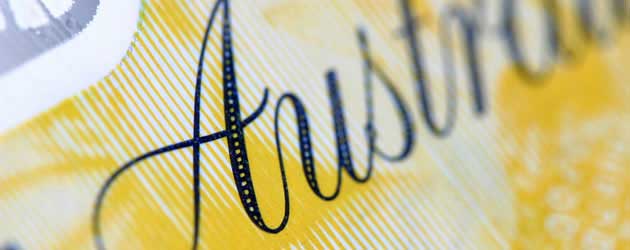The Pound Sterling to Australian Dollar (GBP/AUD) exchange rate strengthened to a fresh 11-month high on Thursday as tumbling commodity prices and increasing fears over the strength of the global economy weakened demand for riskier commodity based assets. More losses for the ‘Aussie’ are forecast as Friday’s Chinese industrial production and retail sales data looks likely to disappoint and come in below market expectations.
Earlier the Pound Sterling to Australian Dollar (GBP/AUD) exchange rate advanced on Thursday after the unemployment rate in the ‘Land Down Under’ rose to a 12-year high and as concerns over the global economy weakened demand for riskier commodity based assets.
Australian Jobs Data Not As Good As First Thought
In the Asian session the ‘Aussie’ briefly staged something of a comeback after data showed that Australian employers created the biggest number of jobs in two years as the nations record low interest rates helped to spur on growth. However as the European market opened the ‘Aussie’ went back onto the retreat as concerns over the global economy and tumbling commodity prices sent investors seeking shelter in safer assets.
According to the Australian Bureau of Statistics, the number of people employed rose by 42,700 to 11.64 million in November. The figure beat economist forecasts for a figure of 15,000 new jobs and was better than the revised 13,700 figure posted in October.
Despite the strong increase in job creation, the national participation rate also increased from 64.6% to 64.7%. That slight increase in the participation rate was enough to send the overall unemployment rate higher to 6.3%.
On closer inspection, the strong job creation figure was not as positive as first thought as the report shows that 40,800 of those new jobs were part-time jobs and the rest were full-time jobs.
‘When you look at the detail, virtually all of the growth was in part-time jobs, so the headline was probably a bit better than it looked. The net outcome is a labour market that is just not providing all the jobs that are required for the new entrants, so we get this gradual drift upward in the unemployment rate,’ said a senior economist at Commonwealth Bank.
The rise in unemployment also weighed on the Australian Dollar as it increases pressure on the Reserve Bank of Australia (RBA) to cut interest rates further from the current record low level of 2.5%. The bank has not altered rates in 16 consecutive months but a slowdown in China and falling commodity prices is making a rate cut increasingly likely to occur sometime next year.
Also weighing on the currency was a separate report released by the Melbourne Institute, which showed that inflation expectations for Australia fell to 3.4% last month from 4.1% in October.
The Pound is likely to see further gains restrained as domestic UK data showed that the UK house price index slowed for a sixth month in a row in November.
Pound Sterling to Australian Dollar (GBP/AUD) Exchange Rates
The Pound Sterling to Australian Dollar reached a session high of 1.9075
The Pound Sterling to Australian Dollar reached a session low of 1.8963

